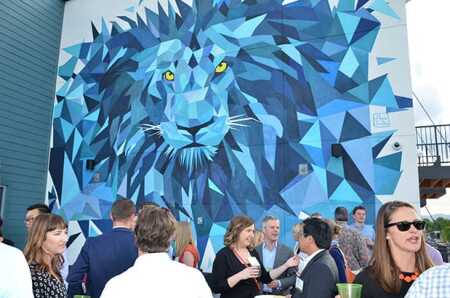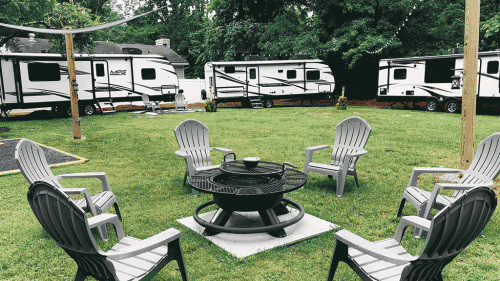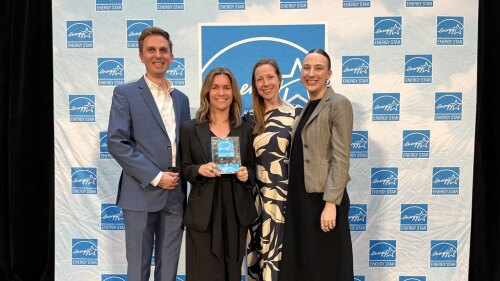Most of the United States remains a suburban nation, despite recent migration of jobs and population to the urban core. Yet the suburbs are also changing in cities such as Denver, where new transit lines and placemaking efforts around walkable mixed-use neighborhoods are creating communities more similar to the urban core, said panelists speaking at a ULI Colorado event in Lakewood, Colorado.
The suburbs have been “a critical focus for ULI since our founding,” but have suffered from a lack of definition, said keynote speaker Stockton Williams, executive director of the ULI Terwilliger Center for Housing. He said that areas of many cities are suburban in nature—auto-oriented, with single-use zoning, “you know it when you see it”—while other areas could be characterized as urban. No consistently used definition for the suburbs exists, he noted, and even the federal government specifies only urban and rural lands, with “urban” areas defined as incorporated cities and areas around them. Most methods to define suburbs use jurisdictional boundaries, which generally do not reflect different types of land use and development.
Williams said that the recent ULI and RCLCO publication Housing in the Evolving American Suburb, based on data from thousands of U.S. Census tracts, takes a housing-focused approach to classifying suburban neighborhoods with factors such as density, housing type, home value, and proximity to downtown. RCLCO applied its methodology to the Denver metro area to develop a report for ULI Colorado that gives a more nuanced picture of redevelopment opportunities in the region’s changing suburbs.
“Metro Denver growth is starting to skew to the urban core, the same as employment,” after decades of job growth in the suburbs, said Williams. The region’s growth “is very balanced now between city and suburbs, which is a sign of a healthy market.” In the Denver metropolitan-area suburbs, home values are higher than in the urban core, and racial and ethnic diversity is greater, though minority groups are more likely to live in distressed areas. Here as elsewhere, millennials disproportionately live in the suburbs rather than in the urban core. He said that the suburbs will be a strong market for more affordable rental housing and starter homes for millennial and workforce households, including immigrants and native-born families of color.
The region is adding 23,000 jobs per year, and unemployment is a low 2.6 percent, with a deficit of 22,000 housing permits at the end of 2016, said Andrew Knudtsen, managing principal of Denver’s Economic and Planning Systems (EPS). Similar to RCLCO, the EPS research shows that factors pushing the housing market from the core to inner-ring areas include a robust economy, cost, the impact of millennials, and availability. Between 2000 and 2016, home prices rose 94 percent to a median near $400,000, while rents increased 56 percent since 2010.
New infill neighborhoods such as Midtown, developed by Brookfield Residential Co. in a changing industrial-residential area of north Denver, have “pushed the envelope in terms of square-foot ownership, [and] they’ve done it by focusing on community,” said Knudtsen. Citing Robert Putnam’s Bowling Alone, he said that people are gravitating to urban areas because they have a “very strong need and desire to feel connected” as part of a community. “You can’t underestimate the role of transit” in urbanizing suburban areas, he added, as new jobs generally are located within a half-mile (0.8 km) of transit. “The challenge is, can these inner-ring communities step up and provide the kind of environment they want?”
The ULI Colorado event showcased two new projects in the heart of Lakewood’s 40 West Arts District: One was the ULI panel site at Lamar Station Plaza, the revitalized 1950s-era suburban strip mall on West Colfax/U.S. 40. In 2015, the site’s new owner, Denver-based Broad Street Realty, invested in site improvements, including new lighting, signage, facades, a parking lot, landscaped islands, pedestrian pathways, and banners—plus a new city park in the plaza developed through a public/private partnership with the city of Lakewood. The mall redevelopment, which includes new tenants such as a brewery, art galleries, and a farmers market, received $1.4 million in tax increment financing.
The ULI networking after the event was held at West Line Flats, located across from the West Line light rail. The brand-new transit-oriented development (TOD) project, developed by Boulder-based Momentum Development Group and Inland National Development Company, features 155 luxury apartments, a fitness center, and a rooftop deck with a lion mural that is visible for miles.
Both projects are located in an area characterized by aging retail and single-family homes that is redeveloping close to the light-rail line, which opened in 2013 and offers ten-minute service to downtown Denver.
ULI Colorado members presented several other projects that are sparking inner-ring revitalization in the region. In Aurora, Denver’s largest inner-ring suburb with a population 353,000, master developer Mile High-Koelbel (MHK), a partnership between Mile High Development and Koelbel and Company, with the city and the Aurora Urban Renewal Authority, are developing the Point, a TOD on the 22-acre (9 ha) former Regatta Plaza strip mall, located across from the Nine Mile light-rail station at I-225 and Parker Road. Development includes entertainment, retail, a new King Soopers, Key Bank, a potential first-class office tower, market-rate and affordable apartments, and a pedestrian bridge connecting to the station.
“We wanted to capitalize on the location” at light rail connecting to Union Station and DIA, as well as the station’s 1,200 parking spaces, said George Thorn, president of Mile High Development.
In 2007, Arvada (population 106,000), located just northwest of Denver, began planning redevelopment of its suburban form around new rail lines, and invested in the station area in the historic district. “With the train arriving in the heart of our authentic and thriving Olde Town, we knew there was an opportunity to inject new land uses and density to the area,” said Maureen Phair, executive director of the Arvada Urban Renewal Authority (AURA). The station area now has the city’s first hotel, the 152-room Hilton Garden Inn, and two higher-density apartment projects with 504 units total. The city also constructed a 600-car transit hub to free up valuable land at the station. Trammell Crow Company is planning a mixed-use project on a former surface parking lot, with 256 multifamily homes over a two-story parking garage with restaurants and retail.
Other projects in Lakewood (population 150,000) include West Line Village, a townhome neighborhood next to the Sheridan light-rail station and regional bike and pedestrian trails in Lakewood’s oldest neighborhood. The project represents the city’s first major for-sale residential project to take advantage of the public light-rail investment. Construction will begin by late summer, with 176 “attainable” market-rate townhouses. More than half of the 29 homes in the Phase I initial release are sold, said Doug Elenowitz, principal of Trailbreak Partners, a development partner with DIRC Homes and T.O.D. Properties. Public art, a park-like stormwater retention area, and a woonerf, or Dutch-style human-centered-design street, will slow activity and “create places for people to come together,” he said. With West Line Village and other projects, he noted, “partnerships are critical to get revitalization projects to happen.”
Bill Marino, executive director of the Lakewood-West Colfax Business Improvement District (BID) and board chair for 40 West Arts, said that focused planning efforts for West Colfax began in 1999 when he was on the Lakewood Planning Commission. Two ULI Colorado Technical Advisory Program panels (TAPs) were instrumental in helping create a vision and develop funding sources for the city’s 40 West Arts District, which won the 2017 ULI Colorado Impact “Inspire” Award for infrastructure. Three organizations—the BID, the arts district, and the West Colfax Community Association—have worked together in revitalizing West Colfax. The key question for the partners, he said: “What do we want this to be in another generation?”
Kathleen McCormick, principal of Fountainhead Communications LLC in Boulder, Colorado, writes frequently about sustainable, healthy, and resilient communities.








